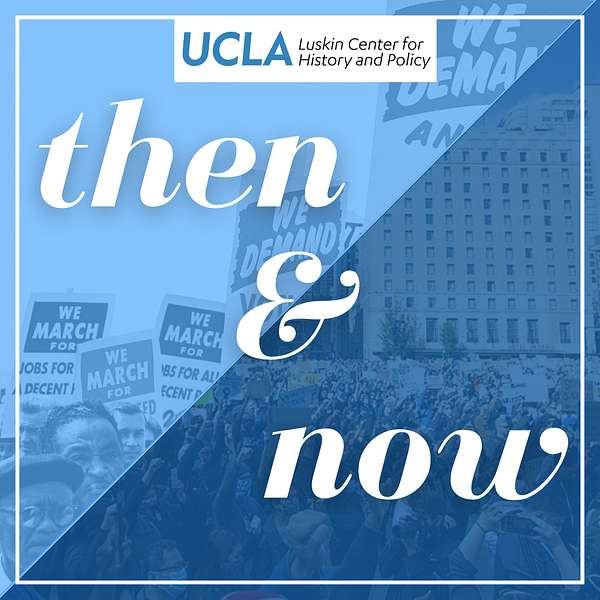
Then & Now
Then & Now connects past to present, using historical analysis and context to help guide us through modern issues and policy decisions. Then & Now is brought to you by the UCLA Luskin Center for History and Policy. This podcast is produced by David Myers and Roselyn Campbell, and features original music by Daniel Raijman.
Then & Now
Urban Spaces Past and Present: A Conversation with Monica Smith
More than half the world’s population currently lives in cities, and current estimates suggest that by 2050 nearly 7 out of every 10 people will live in urban spaces. In an increasingly crowded and urbanized world, space has become a precious commodity. As a species, we seem drawn to cities, despite their obvious disadvantages. From the ancient cities of Southeast Asia to the crowded streets of modern Los Angeles, cities offer opportunities for interactions that wouldn’t be possible in urban areas. In this episode, we sit down with Professor Monica Smith, who shares her perspective on the importance of infrastructure and shared spaces in the birth and survival of cities past and present. How do cities affect the way that we interact with the natural environment and with our fellow human beings, and how can we think creatively about shared spaces in crowded urban environments?
Dr. Monica L. Smith is a professor and Navin and Pratima Doshi Chair in Indian Studies at UCLA. She is an ancient economic historian who uses archaeological data to analyze the collective effects of routine activities through the study of food, ordinary goods, and architecture. Her current research focuses on the Indian subcontinent, a region that has produced some of the world’s earliest and most long-lived urban areas. Her most recent book was published by Viking Press in 2019, and is titled “Cities: The First 6000 Years.”